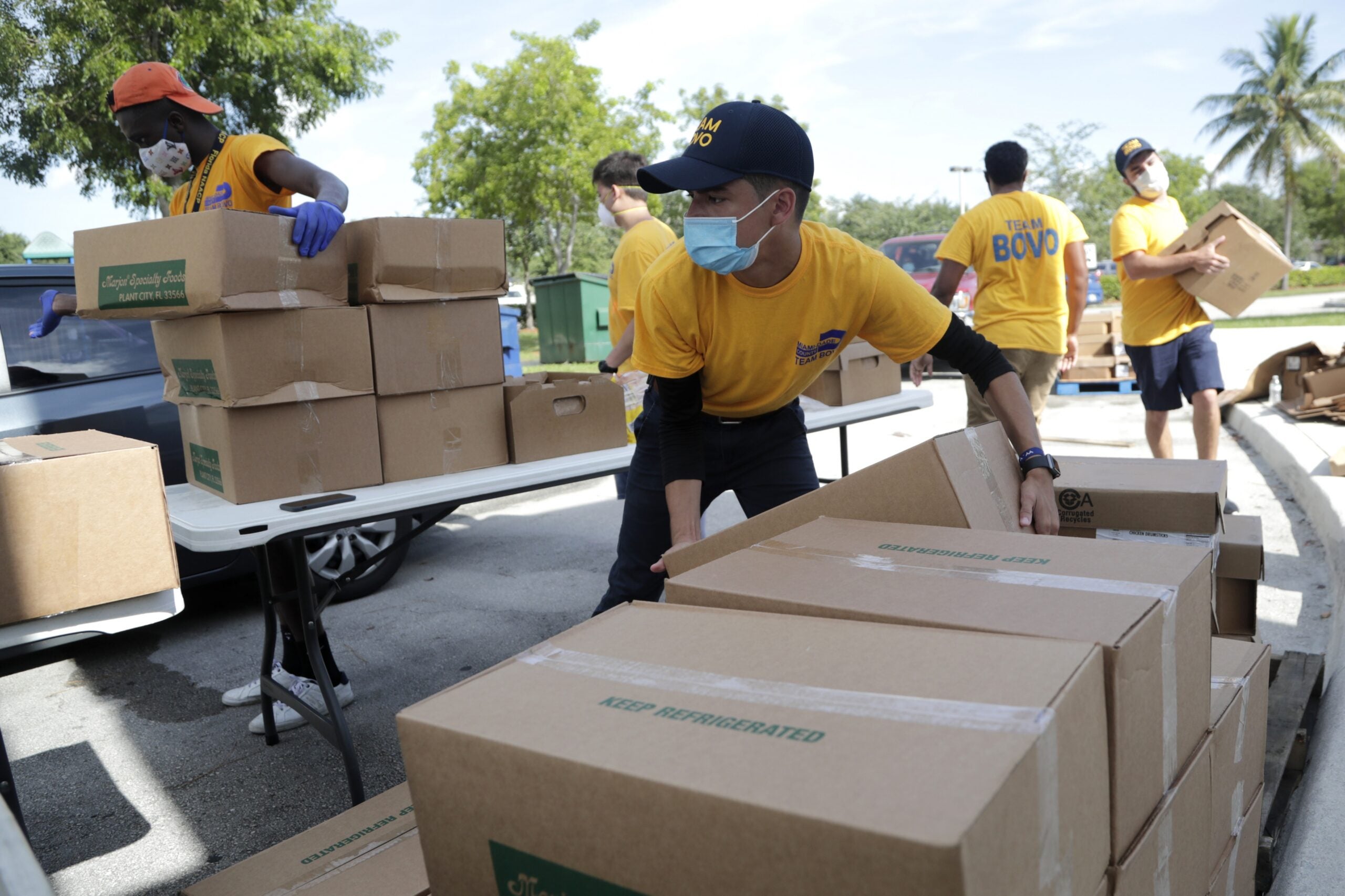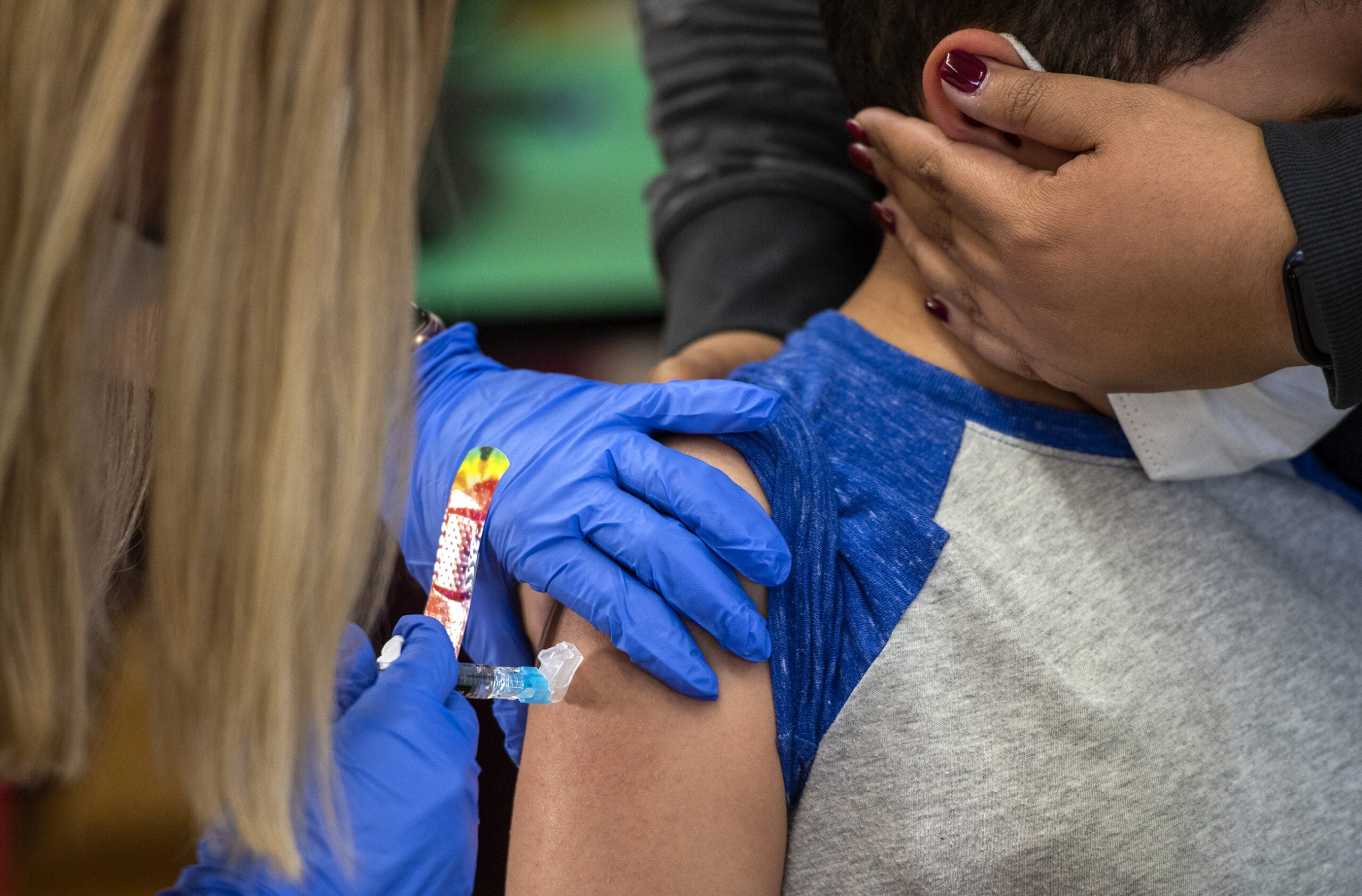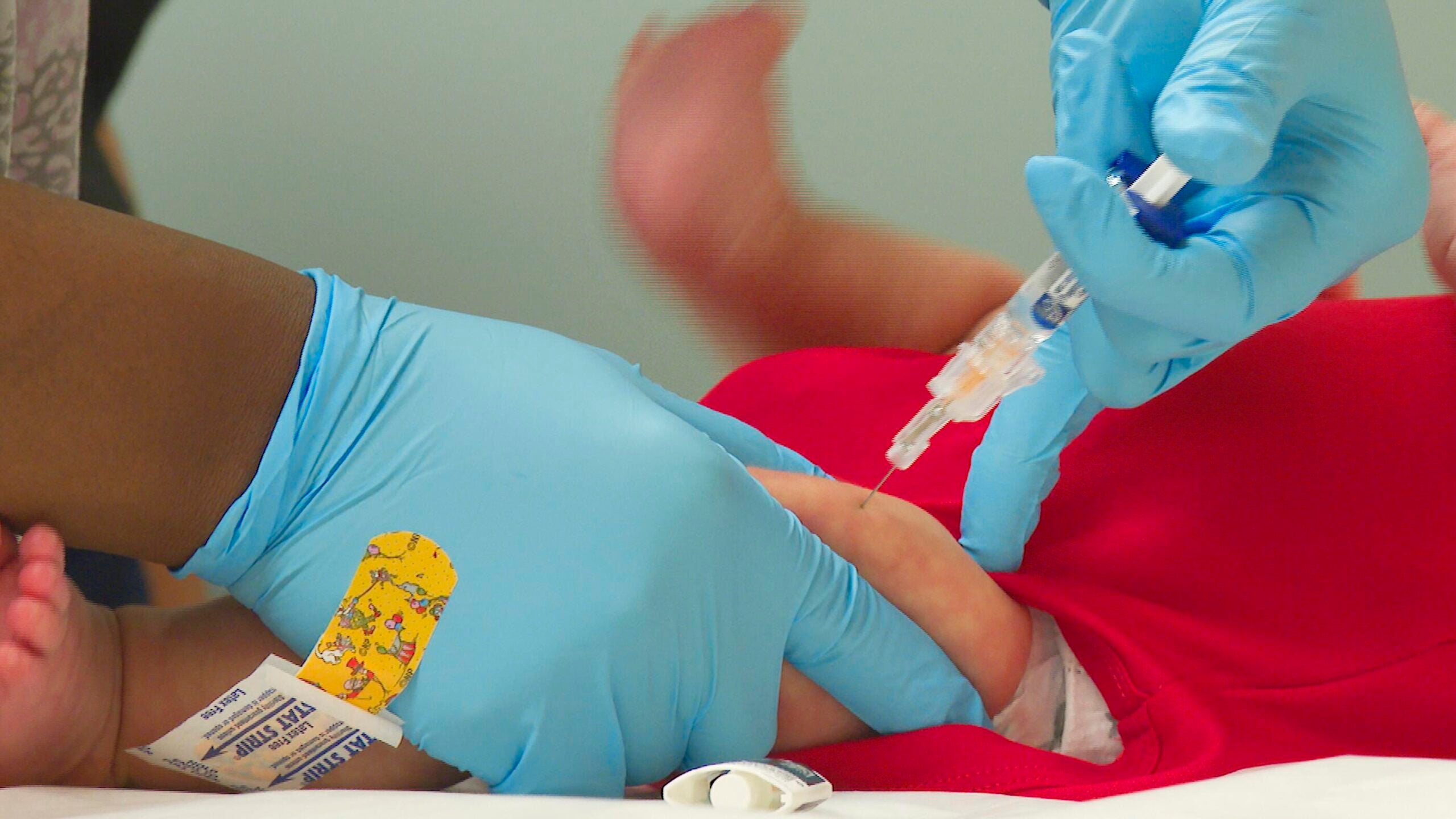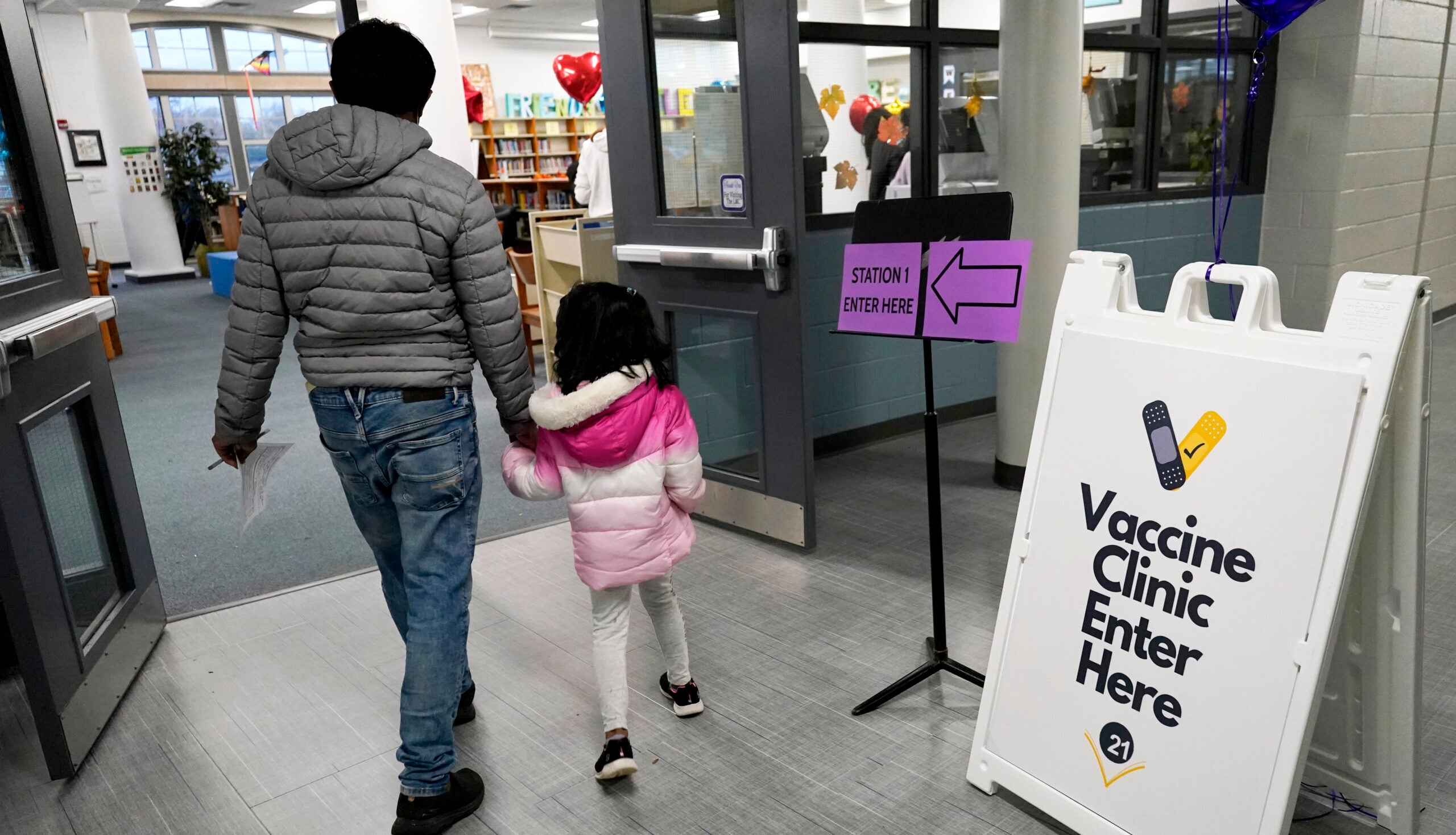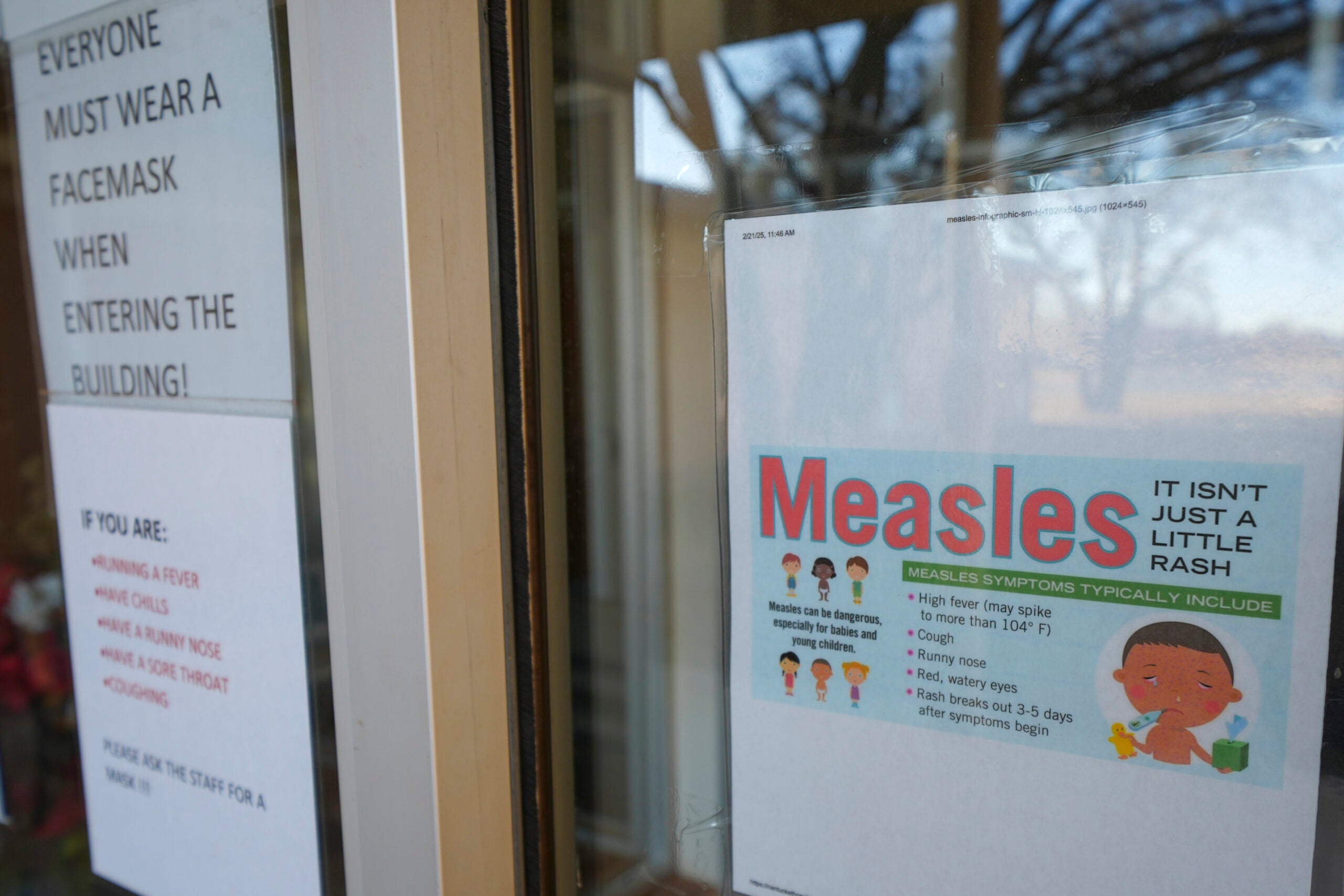New reports of COVID-19 cases are holding steady after a weekend surge in Wisconsin, based on the latest data published by the state’s Department of Health Services.
DHS reported 495 new cases of the virus on Tuesday, bringing the average for the past seven days to 557 daily cases.
One week ago the average was 475 daily cases.
News with a little more humanity
WPR’s “Wisconsin Today” newsletter keeps you connected to the state you love without feeling overwhelmed. No paywall. No agenda. No corporate filter.
The latest figures bring the overall total of positive cases in Wisconsin to 32,556, according to DHS. A total of 805 people in Wisconsin have died from COVID-19, with nine new deaths reported on Tuesday.
The number of new daily cases in Wisconsin hit an all-time high over the weekend. DHS reported 738 new cases on Saturday, setting a one-day record for the most number of new cases since reporting began in March.
During a Tuesday afternoon call with reporters, DHS Secretary Andrea Palm said the state is experiencing a “surge” in cases. Gov. Tony Evers urged Wisconsinites to wear masks and following social distancing guidelines.
“We cannot let this trend continue,” Evers said Tuesday. “Wisconsinites have sacrificed too much over the past months for us to give up on our efforts now.”
Palm pointed out that the state has added roughly 16,000 new cases of the virus since Memorial Day, a number that took several months to reach before the holiday. She added that about 24 percent of cases are among people in their 20s.
Evers said young people need to “step up” to take precautions against the virus.
“We have seen patients at all ages lose the battle against this virus,” he said.
According to DHS, 3.9 percent of all test results reported on Tuesday were positive for COVID-19, bringing the average percentage of positive tests over the past seven days to 6.9 percent. The seven-day average a week ago was 5.3 percent.
The percentage of positive tests is often read by public health officials as a measure of overall testing levels. A high rate could indicate that testing in the state is limited, and skewed toward those already flagged as potentially having the virus. A lower rate could indicate testing is more widespread.
Changes in the test positivity rate can also speak to a virus’ spread, if the size and makeup of the testing pool stays consistent.
Wisconsin’s daily testing capacity — based on the availability of test supplies and adequate staffing — has grown from 120 available lab tests in early March to 19,014 as of Tuesday. The number of actual tests reported on Tuesday was 12,594.
Overall, DHS has recorded a total of 633,568 tests over the course of the pandemic; 601,012 have come back negative.
COVID-19 activity varies heavily from county to county. The latest coronavirus activity data from DHS, released once per week each Wednesday, showed that 36 counties had a “high level” of coronavirus activity. Activity level designations are based on “burden,” or the number of new cases per a county’s population over a 14-day period, as well as whether there’s an upward or downward trend in new cases.
On July 1, counties with the highest case rates per capita included La Crosse, Milwaukee, Lafayette and Dane. The counties with the most significant upward trends included Walworth, Eau Claire and Ozaukee.
All 72 of Wisconsin’s counties have had confirmed cases, although in the latest COVID-19 activity data, four counties had no new cases over a two-week period.
DHS still has a dashboard showing Wisconsin’s progress on gating criteria under the now-defunct Badger Bounce Back Plan. Those gating criteria would have been used to determine when it would be safe to begin reopening the state, prior to the state Supreme Court ruling that ended a statewide stay-at-home order. The state has never met all six of the criteria at once.
Two of the criteria are a statistically significant 14-day downward trend in COVID-like cases reported in emergency departments, and a similar downward trend for influenza-like cases in emergency departments. The dashboard shows the state is meeting a 14-day downward trajectory of COVID-like syndromic cases, but not a downward trajectory of influenza-like illnesses.
According to DHS, 3,639 people have been hospitalized because of the virus as of Tuesday. That means at least 11 percent of people who have tested positive for the new coronavirus in the state have been hospitalized.
Wisconsin Public Radio, © Copyright 2026, Board of Regents of the University of Wisconsin System and Wisconsin Educational Communications Board.
